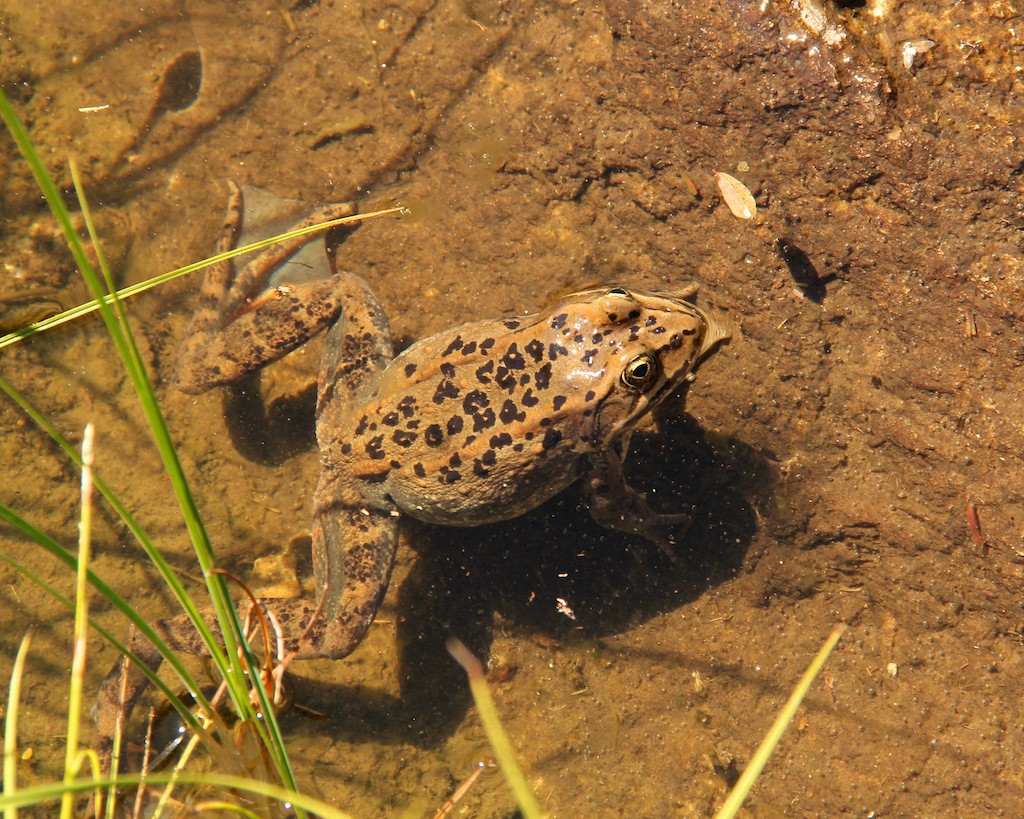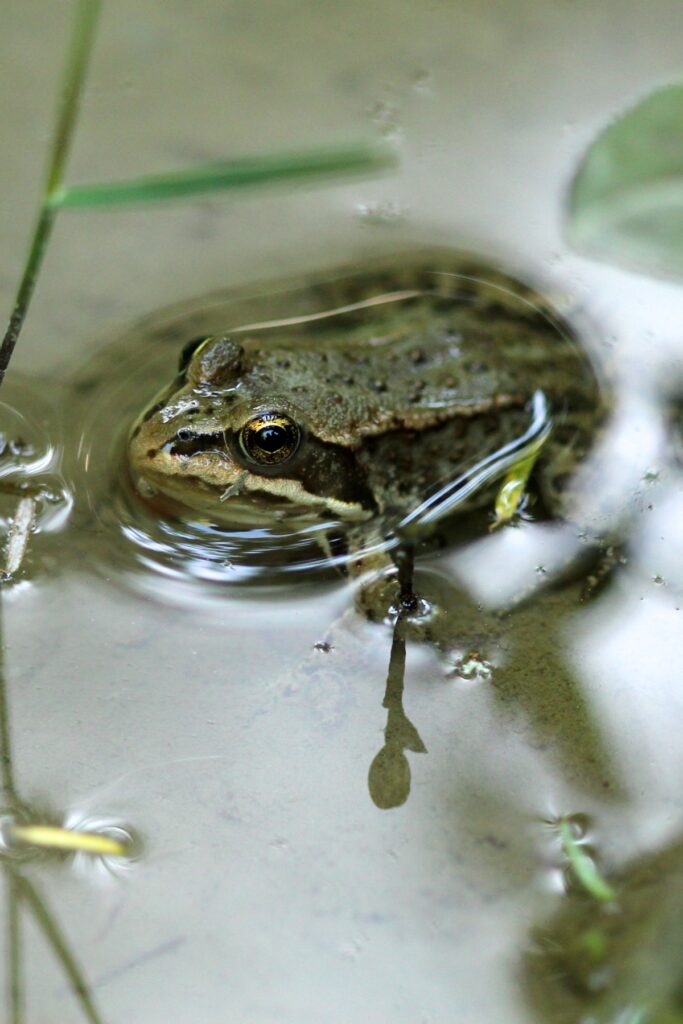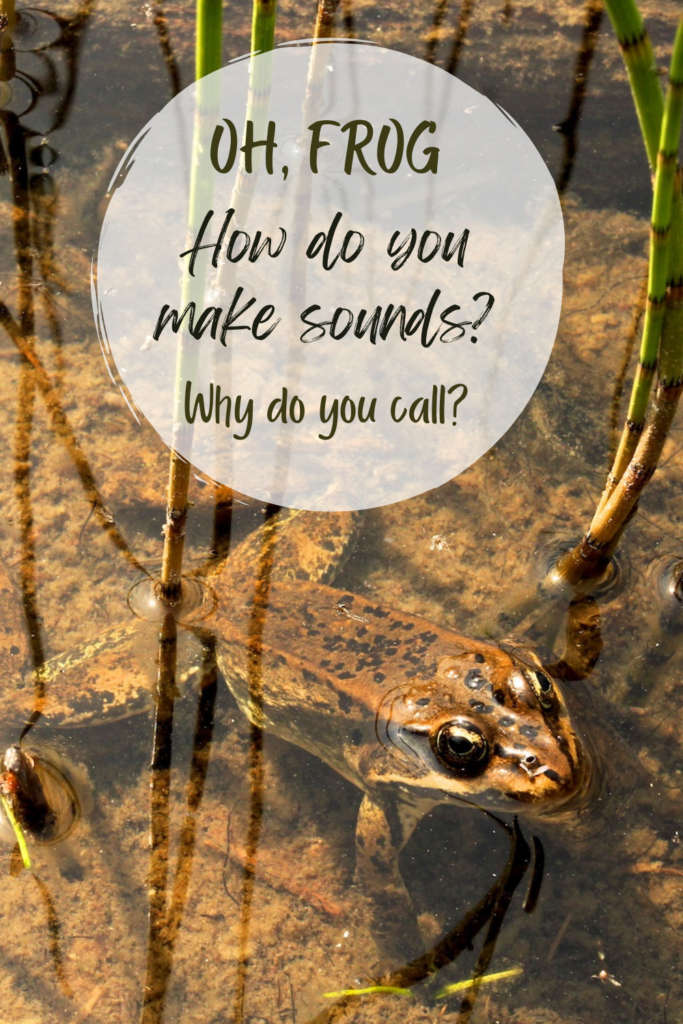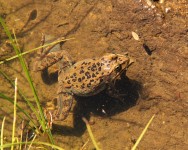Only one frog really says “rib-bit”- the Pacific chorus frog. All other frogs have their own calls-chirps, hoots, croaks and more. These frog mating calls are the typical frog sounds we associate with frogs.
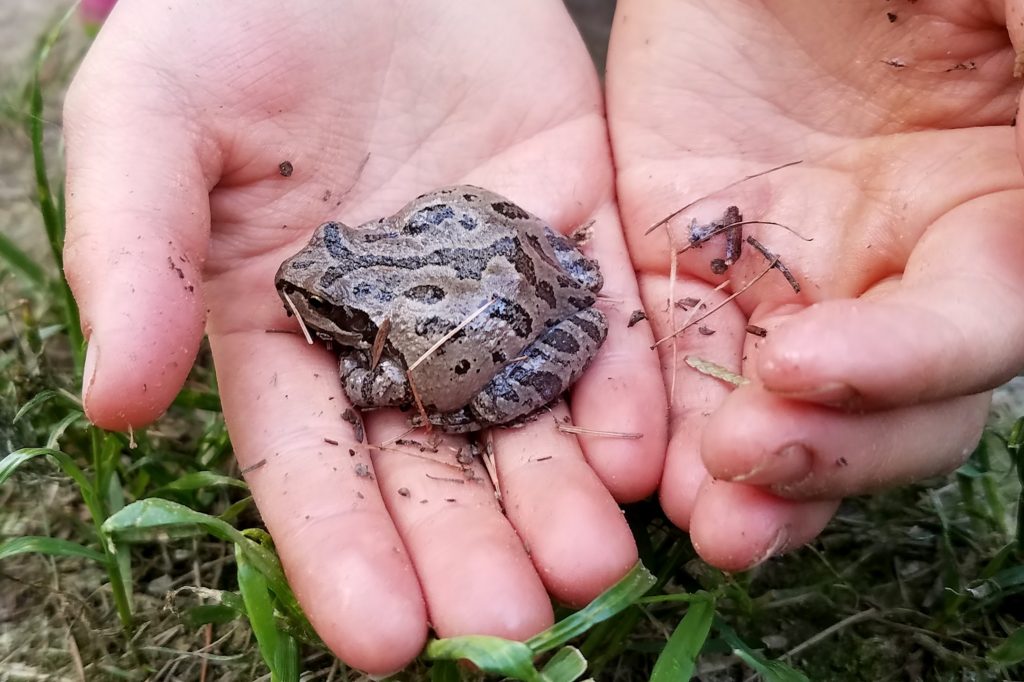
Why do frogs call?
The main reason frogs call is to attract mates. Only males produce the mating call.
In the spring, once males find a suitable water source to breed in, they begin to call in females. The females judge a male by its call to choose her suitor.
Each species has their own call. If different frog species are occupying a pond and are simultaneously calling, a female can hone in on the call of her own species.
Frogs also vocalize to fight over territory. Males may add a warning call to the end of his mating call to warn other males to stay away from his spot. Only males make the mating and warning call.
Both males and females make a distress and release call.
The distress call is sounded when a frog is attacked by a predator. The noise is meant to startle the predator, allowing the frog to escape.
The release called is sounded when an overzealous male tries to mate with an already bred female or a random male. The captured frog can sound the release call to communicate to the overzealous male to let go.
What sound does a frog make?
Each frog species has a different mating call that allows us to identify the species just like bird songs.
Here are some of the frogs found in Idaho and their calls:
- Pacific chorus frog– “rib-bit” or “krekek”
- Spotted frog- soft “clucks” or “thumps”
- Tailed frog- no mating call because they have no eardrums to hear with!
- Wood frog- sounds like a quacking duck
- Northern leopard frog- deep chuckling sound or deep rattling snore with clucking grunts
- Bullfrogs- deep bass “jug-of-rum”
- Boreal chorus frog- loud chirp repeated 30-70 times per minute
- Western toad- no mating call (but they make other sounds)
- Western chorus frog- rapid, short notes (like running your finger over the teeth of a comb)
The mating call of a species can have variations in pitch and speed. Larger frogs can have deeper sounding calls. Also the calls are faster in warmer weather and slower in cooler weather.
Where are frog sounds made?
Males are usually close to water when they call. Depending on the species, this may be a pond, stream, irrigation ditch, wetland or lake.
Tailed frogs prefer fast-moving mountain streams whereas wood frogs and western toads prefer shallow ponds and lakes. Northern leopard frogs, bullfrogs and Pacific chorus frogs can be found in marshes, ponds, shallow streams, and lakes.
The male may call from in the water, on the bank, on rocks or in a tree.
When do frog mating calls happen?
Males start calling in the spring when there is open water and they are ready to mate. However, wood frogs are ambitious and may start calling before all the ice is gone.
Local weather conditions influence when the frogs begin to call and breed. Since frogs are cold-blooded and need sunlight to help warm them, they are reliant on the weather.
Frogs are mainly nocturnal (active at night) so they are more vocal after dusk.
If you hear frog noise outside of breeding season, it may be young frogs trying out their calls.
How do frogs make sounds?
Frogs produce a noise by exhaling air that passes over their vocal chords.
First a frog inhales airs through its nose and simultaneously lowers the floor of its mouth to make more room for air. Then the frog will close its nostrils and force the air into its lungs by raising the floor of its mouth.
As the frog exhales, the air passing over the vocal chords vibrates them and produces a sound. The sound is amplified by passing through the frog’s vocal sacs which act as sound resonation chambers (much like the body of a guitar).
The vocal sacs can either be paired external pouches that expand into sacs above the arms or an internal pouch that expands the throat and sides of the body.
Pacific chorus frogs swell the vocal sac in their throat to three times the size of their head in order to be loud enough.
Amazingly, tiny frogs can make extraordinary loud sounds using this technique.
FAQ
Do female frogs call?
Yes, female frogs make the distress and release call. Only males produce the mating call.
What do different frog sounds mean?
Each species has a different mating call. Therefore, each species can be identified by its call. Within a species, there are mating, territorial, distress and release calls.
How do frogs croak?
The vibration of the vocal chords as air is exhaled past them produces the croak, rib-bit, or other sound.
Why do frogs make noise at night?
Most frogs are nocturnal which means they are active at night. Though some frog species call during the day.
Resources:
- https://australian.museum/blog/science/why-do-frogs-call/
- https://www.sfzoo.org/pacific-chorus-frog/
- https://www.sdnhm.org/blog/blog_details/frog-calls-what-are-they-really-saying/167/
- https://australian.museum/blog/amri-news/the_language_of_frogs/
- https://www.cbc.ca/radio/quirks/oct-23-vikings-in-newfoundland-new-rocks-from-the-moon-making-wood-better-and-more-1.6219865/how-can-tiny-frogs-make-so-much-noise-1.6221311

